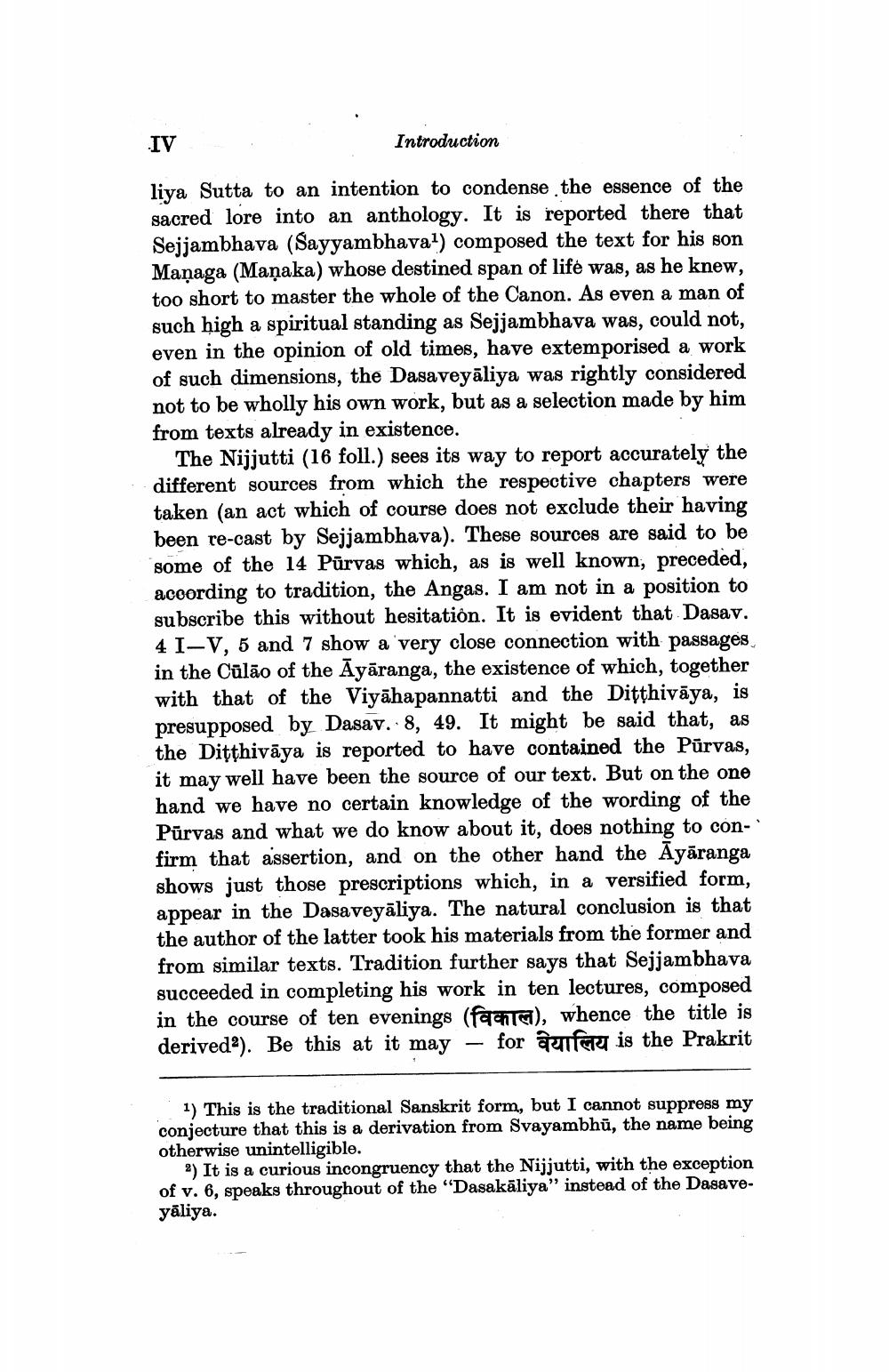Book Title: Dasveyaliya Sutta Author(s): Ernst Leumann, Walther Schubrin Publisher: Anandji Kalyanji Pedhi View full book textPage 5
________________ IV Introduction liya Sutta to an intention to condense the essence of the sacred lore into an anthology. It is reported there that Sejjambhava (Sayyambhava1) composed the text for his son Managa (Manaka) whose destined span of life was, as he knew, too short to master the whole of the Canon. As even a man of such high a spiritual standing as Sejjambhava was, could not, even in the opinion of old times, have extemporised a work of such dimensions, the Dasaveyaliya was rightly considered not to be wholly his own work, but as a selection made by him from texts already in existence. The Nijjutti (16 foll.) sees its way to report accurately the different sources from which the respective chapters were taken (an act which of course does not exclude their having been re-cast by Sejjambhava). These sources are said to be some of the 14 Purvas which, as is well known, preceded, according to tradition, the Angas. I am not in a position to subscribe this without hesitation. It is evident that Dasav. 4 I-V, 5 and 7 show a very close connection with passages in the Culão of the Ayaranga, the existence of which, together with that of the Viyahapannatti and the Ditṭhivaya, is presupposed by Dasav. 8, 49. It might be said that, as the Diṭṭhivaya is reported to have contained the Purvas, it may well have been the source of our text. But on the one hand we have no certain knowledge of the wording of the Purvas and what we do know about it, does nothing to confirm that assertion, and on the other hand the Ayāranga shows just those prescriptions which, in a versified form, appear in the Dasaveyaliya. The natural conclusion is that the author of the latter took his materials from the former and from similar texts. Tradition further says that Sejjambhava succeeded in completing his work in ten lectures, composed in the course of ten evenings (fat), whence the title is derived2). Be this at it may for वेयालिय is the Prakrit 1) This is the traditional Sanskrit form, but I cannot suppress my conjecture that this is a derivation from Svayambhu, the name being otherwise unintelligible. 2) It is a curious incongruency that the Nijjutti, with the exception of v. 6, speaks throughout of the "Dasakaliya" instead of the Dasaveyaliya.Page Navigation
1 ... 3 4 5 6 7 8 9 10 11 12 13 14 15 16 17 18 19 20 21 22 23 24 25 26 27 28 29 30 31 32 33 34 35 36 37 38 39 40 41 42 43 44 45 46 47 48 49 50 51 52 ... 142
